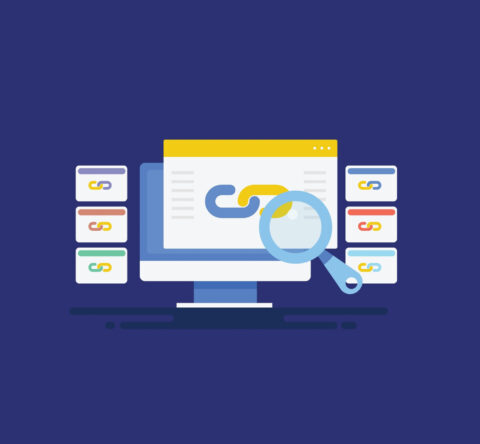One of the most asked questions in the PWA domain is – will PWA replace native apps? Steve Jobs predicted that PWA will replace native apps and will be able to produce incredible iPhone apps using web technology solely when he unveiled the first iPhone in 2007. At the time, neither the App Store nor the idea of native apps existed.
What Jobs envisioned is what we now refer to as Progressive Web Apps, essentially websites with app-like behavior and offline functionality.
Sadly, that concept never gained traction, and a few months later, the App Store was introduced. A native SDK was now required for developers to create an iPhone app, but the question remains: Will PWA replace native apps?

Availability of native apps
Since the App Store has been a massive success since it was introduced, Forbes referred to Jobs’ goal to allow web developers to create apps for the iPhone using solely web technologies as his biggest mistake.
Given that there are now millions of apps available on Google Play and Apple’s App Stores which arises that will progressive web apps replace native apps and that mobile users now spend 80% of their time using mobile apps, it’s difficult to emphasize this fact.
Great! The popularity of smartphone apps is evident, then.
The issue with this statistic is that these app users spend 96% of their time on just 10 of their favorite applications, or 77% of their time on just three apps. This implies that persuading users to utilize your software is pretty challenging. And that’s not the end of it.
It would help if you first convinced users to answer that will PWA replace native apps and download your app before they can utilize it. Thus, you will require them to:
- Look for your app.
- Install by clicking
- accept authorizations
- Hold off until it downloads.
- 20% of your potential users could leave throughout each of these processes.
Additionally, the cost of creating a native app is high. You will need to create two versions of the same app: one for iOS and one for Android unless you create a hybrid app. You might want to reconsider even creating an app given that 77% of users abandon it within three days
The most well-known apps do significantly better, yet even the top 100 lose over half their users within the first three days of installation.
In any case, how valuable is your app?
A banner always asks you to download their mobile app when you access the LinkedIn website on your phone. The same is true for Medium and many other websites. Typically, there isn’t a way to ignore it once and never get bothered again. It’s persistent and unpleasant.
You see, there is no benefit to you in downloading a mobile app if the experience on the mobile website is sufficient and the app doesn’t improve it.
You start to question why some websites even offer an app. I think they might have an app merely because everyone else does. Thus the app essentially provides the same functionality as the mobile website.
You’ll struggle to persuade consumers even to download your app if they don’t perceive any value in it. Help to answer that, will progressive web apps replace native apps?

Any website is eligible to be a Progressive Web App.
A website with added functionalities is called a Progressive Web App (PWA). Your website can become a PWA by incorporating these qualities; therefore, just about any website can do so.
You must add two features: a service worker and a manifest.json file.
A simple JavaScript file called a service worker gives your website offline functionality. Between your browser and the network, it serves as a proxy server and can intercept network requests and offer personalized responses.
This implies that even while you’re offline, you can still send a request to your website, and it will be able to provide, for instance, a cached response and help to think about whether will PWA replace native apps. A program that modifies a document on a distant server might be available. When the app is offline, it can save requests to change the document locally and submit them to the server once it is online.
You can create an app-like user experience on your website without a full-fledged native app.
The manifest.json file contains your app’s start URL, screen orientation, and the icons it uses.
Technically, it would help if you used HTTPS to serve your site and have a service worker and manifest.
You only need a JSON file to convert your website into a PWA.
The current situation of PWA
What can a PWA do today, then? How does it perform across various platforms?
A progressive web application (PWA) is one kind of software app that delivered through web, it’s made with HTML, JS, and CSS. It can work on any platform, including mobile devices and desktops.
If you develop a PWA titled What PWA Can Do Today that illustrates what PWAs are currently capable of. It highlights capabilities you can utilize with a PWA and draws inspiration from what the web can do today.
Install it on your smartphone, tablet, or computer, play around with it, and see for yourself what is possible if you set up a repository on Github to gather bugs and want to keep improving it.
On Twitter, where I frequently post about PWAs, Web Components, and the capabilities of the modern web, you may follow me.
PWA vs Native Apps: Choose which one better for you
In comparison between native apps vs PWAs, PWAs provide too many advantages. If your website is mobile-friendly, you may quickly convert it to an app. This implies that you are no longer required to create separate apps for iOS and Android.
Since your app is essentially just a website, users can find it by searching for it on Google. Give the URL to the person you wish to install it on instead of going through the app store submission process.
To utilize your program and to look at pwa vs native app, consumers won’t need to download tens of megabytes of code anymore. Your PWA can be lightweight and quick because it is only made of HTML, CSS, and JavaScript.
You are no longer required to ask your users to install updates. When your app gets a new version, you must upload it to your web server, and users will immediately start using the updated version when they return.
The Developer’s Perspective on PWA vs Native App
How developers write different languages for various purposes
PWA apps are written with the tactics so they can run internally on web browsers, whereas native apps are written for mobile devices. JavaScript, CSS, and HTML are used for PWA apps, whereas Java for Android & Swift, and Objective-C for iOS are used for Native app development.
The User’s Perspective on PWA vs Native App
A user installs an app only when he genuinely requires it. Users visit the app store and then, search for the required app and download it (after getting the app’s permissions)
So talking about PWA vs native apps, PWAs require no app store installation from the browser. With just a few steps to follow. Users can add them on the home screen, as well as they are easily integrated with system settings.
Who Performs Best: PWA vs Native App
When we differentiate native app vs PWA, PWAs load quicker. The scripts run into the background that’s usually separate from the web page. With this user can manage other requests, prefetch, and cache resources as well. So adding to the home screen procedure will always be helpful for the user.
So in short PWA has always performed better when compared with native apps.
Conclusion
PWAs can perform most native app functions, and PWAs might readily replace many native apps. Ironically, though, iOS, the operating system of the business whose co-founder first proposed the concept of a PWA, lags.
PWA support on Android is substantially more robust and proliferating than on iOS, which is patchy and inconsistent, and it answers the question ‘Are progressive web apps in the future?’
For more such blogs, Connect with GTECH.
Related Post
Publications, Insights & News from GTECH








